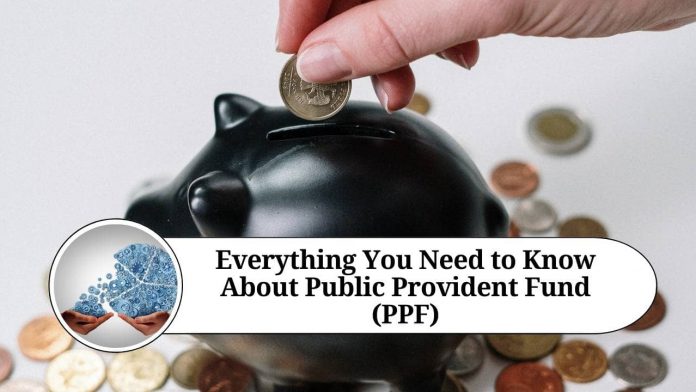Public Provident Fund (PPF) is a savings scheme offered by the Indian government. It is a long-term investment tool that provides financial security and tax benefits to individuals. The scheme was introduced in 1968 by the National Savings Institute, and since then, it has become a popular investment option among Indians.
In this blog, we will discuss the tax benefits of investing in PPF and how it can help you save money.
What is PPF?
PPF is a savings scheme that allows individuals to invest in a tax-free manner for a period of 15 years. The scheme is designed to provide financial security to individuals during their retirement years. The minimum investment in PPF is Rs. 500 and the maximum investment is Rs. 1.5 lakhs per annum.
PPF is a government-backed investment scheme that offers a fixed interest rate. The interest rate on PPF is determined by the government and is subject to change every quarter. The current interest rate on PPF is 7.1% per annum, which is significantly higher than the interest rates offered by banks on fixed deposits.
What are the tax benefits of PPF?
One of the main advantages of investing in PPF is the tax benefits it offers. Here are the tax benefits of investing in PPF:
- Tax deduction under Section 80C: Investment in PPF is eligible for tax deduction under Section 80C of the Income Tax Act. This means that the amount invested in PPF can be claimed as a deduction from the taxable income, up to a maximum limit of Rs. 1.5 lakhs per annum. This can result in significant tax savings for individuals.
- Tax-free interest: The interest earned on PPF is tax-free. This means that the interest earned on PPF is not added to the taxable income of the individual. This can result in higher returns for the investor, as there is no tax deducted on the interest earned.
- Tax-free maturity amount: The maturity amount received on PPF is also tax-free. This means that the individual does not have to pay any tax on the amount received at the end of the 15-year investment period.
- No wealth tax: The amount invested in PPF is not subject to wealth tax. This means that the individual does not have to pay any tax on the amount invested in PPF.
In addition to the tax benefits, investing in PPF also provides other benefits, such as safety and security of investment, attractive interest rates, and flexible investment options. PPF is a low-risk investment option, as it is backed by the government and the interest rates are fixed by the government.
Read Other Useful Blogs:
Conclusion:
PPF is an attractive investment option for individuals who are looking for long-term financial security and tax benefits. The tax benefits offered by PPF can result in significant savings for individuals, while also providing a safe and secure investment option. Individuals who are looking to invest in PPF should consult with a financial advisor to determine the best investment strategy for their needs.
Frequently asked questions (FAQs) about PPF:
- What is PPF?
PPF is a savings scheme offered by the Indian government that allows individuals to invest in a tax-free manner for a period of 15 years.
- Who can open a PPF account?
Any individual can open a PPF account, including minors. However, only one account can be opened per individual.
- How much can I invest in PPF?
The minimum investment in PPF is Rs. 500 and the maximum investment is Rs. 1.5 lakhs per annum.
- What is the interest rate on PPF?
The interest rate on PPF is determined by the government and is subject to change every quarter. The current interest rate on PPF is 7.1% per annum.
- What are the tax benefits of investing in PPF?
Investment in PPF is eligible for tax deduction under Section 80C of the Income Tax Act. The interest earned on PPF is tax-free and the maturity amount received on PPF is also tax-free.
- Can I withdraw money from my PPF account before the maturity period?
Partial withdrawals are allowed from the 7th year of investment in PPF. However, the amount of withdrawal is limited to 50% of the balance at the end of the 4th year preceding the year of withdrawal.
- Can I extend my PPF account after the maturity period?
Yes, you can extend your PPF account in blocks of 5 years after the maturity period.
- What happens to my PPF account if I move to another country?
You can continue to maintain your PPF account even if you move to another country. However, you cannot make any further contributions to the account. The interest earned on the account will continue to be tax-free.
- Can I open more than one PPF account?
No, only one PPF account can be opened per individual.
- Is PPF a safe investment option?
Yes, PPF is a safe investment option as it is backed by the government and the interest rates are fixed by the government. The investment is also not subject to market fluctuations.




















